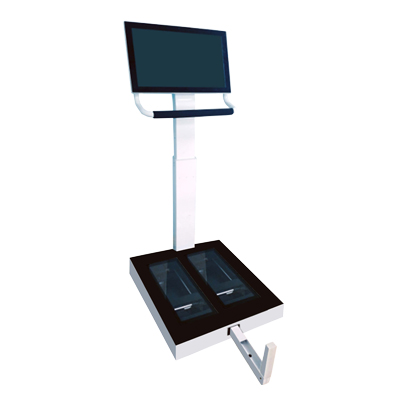To make insoles, orthopedic insoles, foot correction insoles, or to fit sports shoes, a plantar scanner is needed.
And the plantar scanner you are using is very likely “laser-based.” So, what are the benefits of laser? Why is laser scanning accurate, experienced, and applicable?
1. How does the principle work?
The plantar scanner projects a laser beam onto the sole of the foot, and uses an optical sensor to receive the three-dimensional contour generated by the light passing through or deforming. Point-matrix or linear data is used to reconstruct and generate a precise 3D model of arch height, plantar pressure distribution, and foot shape curves.
What laser obtains is not contact-based measurement, nor a “two-dimensional image” captured by photography, but “spatial restoration.” It is not height difference, it is all “spatial distance.”

2. More precise, with smaller error!
Laser is a straight line and has good stability. Unlike other scanning methods, it is basically not affected by “human” factors.
A good scanner is “millimeter-level,” some can even reach the 0.5-millimeter level. Plantar depressions, toe lines, and arch curvature can all be realistically restored.
For making custom orthopedic insoles, medical analysis, and sports shoe fitting, this is a “high-precision requirement.”
3. Non-contact, more hygienic and more comfortable!
Traditional plantar measurement, such as stepping in plaster, soaking molds, or contacting a measurement plate, is cumbersome and messy.
Laser scanning requires standing barefoot or placing the foot lifted, without contact, which is more hygienic and does not create pressure on the sole. For those afraid of itching, the elderly, children, and people with skin damage, the experience is better.
4. Fast, accurate, and efficient scanning
It only takes a few seconds, and after the scan, a three-dimensional image and measurement parameters are instantly generated by the computer.
Compared to plaster hardening, mold flipping, or manual comparison, it greatly improves work efficiency and facilitates on-site comparison, analysis, and planning.
5. Safe and harmless
The laser used for plantar scanning is a low-energy laser, does not irritate the skin, and has no radiation risk.
Unlike X-ray or contact-based structured light scanning, laser belongs to a kind of physical optical measurement. There are no health concerns, and it does not affect long-term use or repeated measurement.
6. Larger amount of detailed information
The plantar measurement information obtained by laser scanning is not just simple length, width, and curvature. It can show more detailed information such as heel tilt, arch collapse, and force point deviation. These details play a direct role in custom insoles, rehabilitation planning, or gait analysis.
7. Can be saved, reviewed, and compared
What laser scanning generates is not a single value, but a visual digital model that can be exported into a standard format for archiving.
When scanning again, subsequent data can be overlaid with previous data, making it convenient to track plantar changes and evaluate correction effects.
8. Large measurement range and wide coverage of people
The content covers everything from children’s arch development to foot shape degeneration in the elderly; from training athletes to diabetic plantar protection; from medical correction to commercial shoe fitting—almost all needs are covered.
